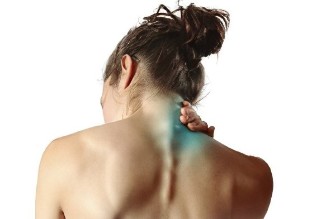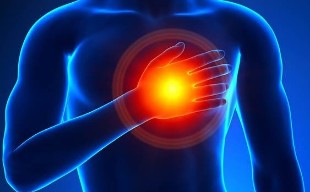Osteochondrosis of the cervical spine is a progressive disease, which is degenerative changes in the intervertebral discs, accompanied by the deformation change of the structure.

Cause of the disease. The main reason is the violation of metabolic processes in the body, as a result of the the deterioration of the blood supply to the intervertebral discs. Less frequently the disease occurs as a result of injury to the neck spine. Contribute to the emergence of degenerative disc disease: sedentary lifestyle, incorrect posture, prolonged "sitting" at a table in front of the computer, etc.
Osteochondrosis of the cervical spine, the treatment at the clinic
Treatment of cervical degenerative disc disease the clinic performing the methods of the East the medicine. In the process, the treatment methods used in Tibetan drug – to-point massage, herbs methods of Chinese medicine first and foremost, acupuncture and moxibustion. It is possible to use a soft, manual therapy osteopathy (including the "cranial-sacral techniques", which a method, soft impact on the bone and soft structures of the skull; the goal, the method - the restoration of the proper circulation of the cerebrospinal fluid), as well as other methods are available to the doctors clinic.

Treatment of degenerative disc disease of the cervical the spine is one of the basic directions of activity of the clinic. Based great experience working in this direction, we can say that the results the treatment of the disease (including complicated protrusions and hernias the spine) is quite satisfactory. Treatment of cervical degenerative disc disease selection each individual patient is complex (of the procedure a session usually includes a variety of methods of treatment the duration of the session – 1-1,5 hours). Pain in the cervical spine, is usually removed up to 70% after 2-3 medical session. Treatment of osteochondrosis of the average, from 5 to 11 session. During the treatment produced effects on the pathological changes the body, which led to the appearance of the disease.
Characteristics of osteochondrosis of the cervical spine
Cervical osteochondrosis, compared to the thoracic lumbar osteochondrosis with many features. These characteristics determine the main thus, characteristics of the structure of the neck vertebrae, the size of the bony structures which is much smaller than the vertebrae in other departments. Neck - the a movable spine, keep your head up, you are constantly loaded. Osteochondrosis often affects the mobile segment (root-5 - S-7) - this determines the end of the symptoms of degenerative disc disease of the cervix.
The neck is a relatively small amount a number of vascular and neurological structures, including here artery vertebral, which supplies blood to the back parts of the brain the medulla is the cerebellum. When compression of the vertebral artery is due to a reduction in traffic in the result of stenosis can develop ischemia of the brain spinal cord, as in acute cases, can lead to stroke, spina of. Symptoms of vertebral artery - dizziness, decreased coordination movements, deterioration of hearing, vision.
Because of the brevity, the neck a little the displacement of the vertebrae or muscle tension can cause nerve compression ending (a nerve in the cervical spine) or blood vessels. The resulting eventually of joints in terms of brevity of neck aggravates the situation.

Cervical osteochondrosis leads to the formation of the protrusion and hernia the spine, which (in addition to the above reasons, muscle tension, neck disorder, the formation of joint), comprimarea nerve root, because swelling and inflammation. In the end, due to the small size of the vertebral channel the cervical spine, the entire volume, additional compremised (compression occurs in the spinal canal). Clinical symptoms condition - severe pain.
Osteochondrosis can cause the compression of the spinal cord, and because of the narrowness of the sales for the purpose of the cervical canal the spine is more common than in the thoracic and lumbar spine. In this case the affected area is not only head and neck, but the top (which more often), lower extremities. The nature of the cervical osteochondrosis often (compared to lumbar, and thoracic), leads to the patient's disability.
In summary, here are the factors that determine the compression of the different vascular nervous structures cervical osteochondrosis
- Displacement (slip) of the intervertebral disc spondylolisthesis. The most common misalignment is minimal, because even a small offset vertebrae in the cervical spine causing the paralysis, and often death result.
- Protrusions and hernias spine as a result of development of osteochondrosis of the cervical the spine in the spinal canal.
- Joint. As a result of cervical degenerative disc disease on the side of the the vertebral bodies and the joints formed bony lumps - joint. Joints located on the sides of the vertebral bodies adjacent to annoy him muscle tone, which increases. This increases the load on the vertebrae, that increased pressure on inter-vertebral disc height reduce, increase of the protrusion in the intervertebral disc. Joint, which is designed in the direction of the channel, where the vertebral artery may cause aortic stenosis.
- Reduce the height of the intervertebral disc (the flattening of the intervertebral disc)is often caused by the compression of nerve roots by reducing the inter-vertebral foramen. In addition, in this case, if the unsuccessful turn neck possible, subluxatio the neck vertebrae, which is a further compression.

Degenerative cervical disc disease symptoms
The symptoms of degenerative disc disease of the cervical the spine depends on, first, what was the purpose of the defeat. Distinguished: radiculáriszt syndrome (compression of spinal roots), compression spinal cord ischemia spinal cord as a consequence of stenosis of the vertebral artery, that the decreased blood flow in the brain stem, cerebellum, skull the nerves in the inner ear. Below are a few common diseases.
- Radiculáriszt syndromes in the cervical radiculitis. Arise roots comprimarea (a nerve in the cervical spine). These are the symptoms of cervical degenerative disc disease associated with a pinching (compression) of the nerve roots. The pain radiates from the neck down the shoulder, then shoulder, forearm (the outer surface), to the fingers hand. Could be that pale, "run a needle" tingling the forearm, wrist and fingers. Also, depending on which segment affected, the symptoms of cervical osteochondrosis are different. For example, the defeat of Central nerve roots of the pale, thumb, index finger and the middle finger, and the defeat of roots of the brachial nerve - ring and the little finger ... (the rest of the symptoms are the same).
- Irritant-reflector the same syndromes. Symptoms: burning pain in the cervical-occipital region or the neck (after sleep, when turning the head, sneezing, etc.). It is possible irradiation in the shoulder and chest.
- Artery vertebral syndrome in cervical osteochondrosis. Symptoms: throbbing, or "burning" headache, exciting, the back of the head, the temple, the darkness the area above the eyebrows. The pain is often continuous, less paroxysmal, increases after a long stay in an uncomfortable position when driving. General weakness the body, nausea, loss of consciousness. Can occur unilateral hearing disturbance: noises, reduced visual acuity, vestibular disorders. Patients the coronary artery disease may increase the blood pressure, pressing pain in region of heart. Possible the decreased visual acuity, eye pain, etc.
- Heart syndrome. The symptoms of degenerative disc disease this syndrome similar to the symptoms of true angina. It is assumed that the muscle-contractions of the heart caused by compression spinal roots of the lower segments of the cervical spine the reflex response. Heart syndrome occurs when irritation of the roots the pectoralis major muscle or the phrenic nerve roots, because of the threads go to the pericardium. Clinical symptoms: pressing pain in region of heart. Pain may be paroxysmal, but it may take several hours. Growth a sharp turn of the head, coughing, sneezing. Possible, tachycardia, arrythmia. Coronarosclerosis means that the pain cannot be removed. The ECG recorded during attack shows no sign of violation of the coronary circulation.



































